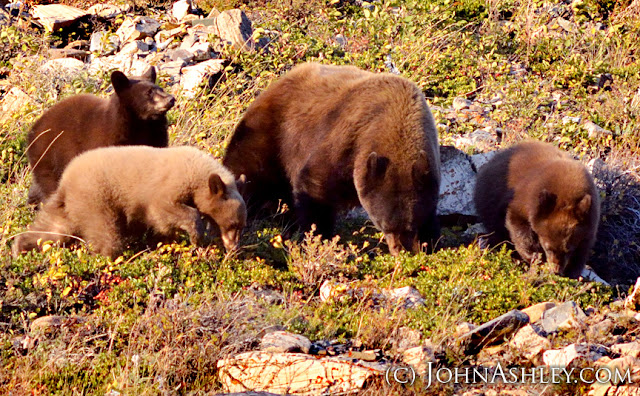 |
| A black bear family plucks little red berries from a patch of bearberrry in Glacier National Park. |
Open slopes in late-fall means that some bears can stay out a little later and pack on a little more fat to survive the winter with. Food preferences vary somewhat between individuals and substantially between regions. In late summer and early fall, Glacier's west side bears rely heavily on huckleberries, while east side bears rely more on whitebark pine nuts and buffaloberry. But in the fall, both groups of bears feed on kinnikinnick berries (Arctostaphylos uva-ursi).
 |
| One ripe bearberry |
In recent weeks, we've seen lots of bears feasting on a good bearberry crop along the lower slopes, on the east side of Glacier. While the black bear family (above) was moving from one clump of bearberry to another, other bears on the mountain were doing the same.
Just around the ridge to the east, a very obese, lone black bear (a boar?) was very preoccupied gorging on the little red berries. High up and farther west on the same slope, a lone grizzly bear spent most of the evening feeding in what looked (through binoculars) like bearberry patches. Across the valley to the south, another big black bear studied the other bears for a while before climbing down the ridge and crossing the creek just before dark - heading for the bearberry patches?
Bears hibernate because it prevents a net energy loss. At some point, the amount of calories gained from eating plants is less than the amount required to find food that's buried under snow. From south to north, the length of bear hibernation increases from a few weeks to a few months. But until we get a really good snowstorm, some of Montana's bears seem to be staying up late.

